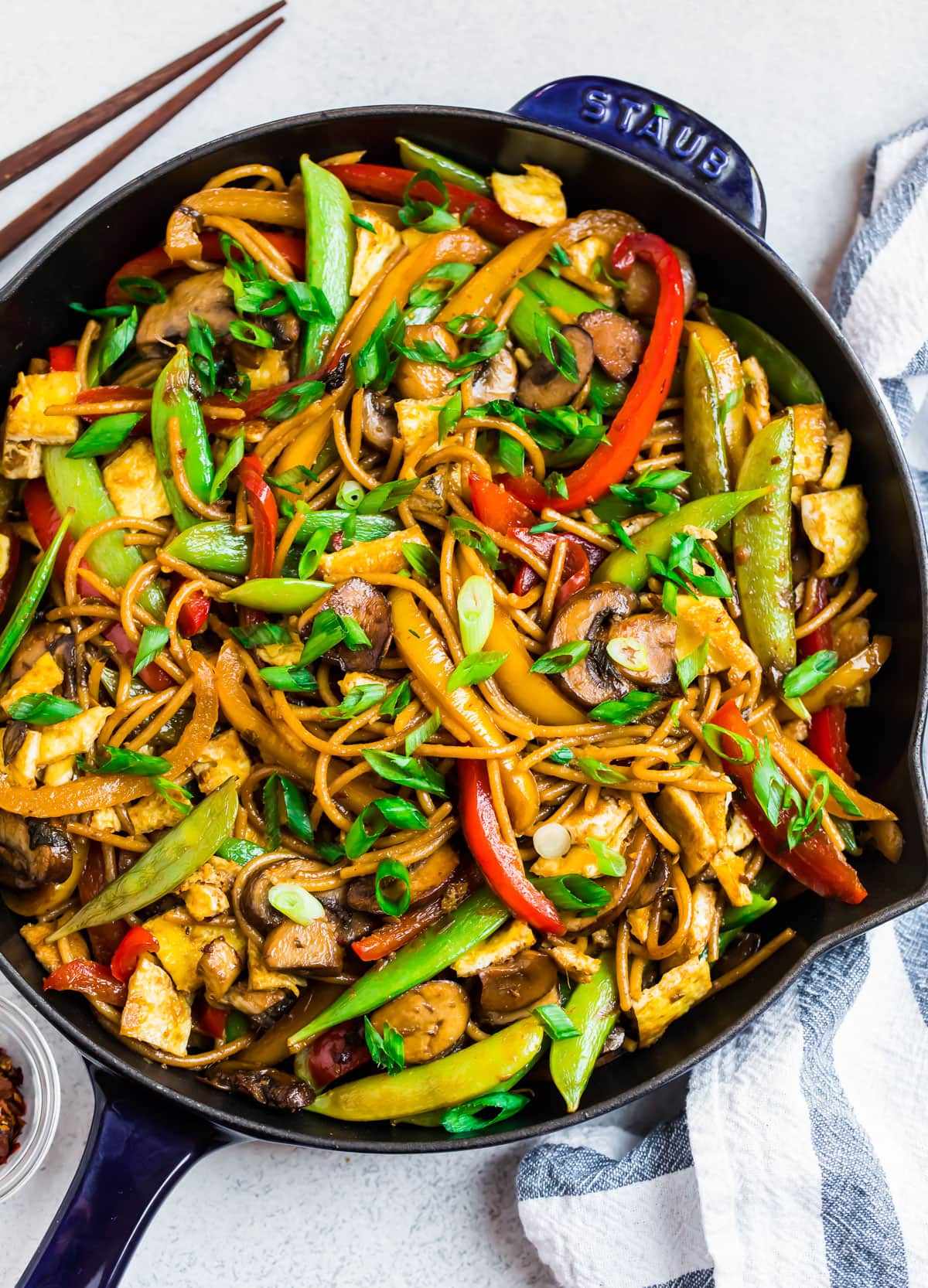After tiring of the same routine in my immediate post-college survival days (a rotation between frozen meals and Anything With Eggs), I decided to spread my wings and tackle the vegetable lo mein I adored in Chinese restaurants as a kid. Little did I know that this all-in-one vegetable extravaganza would be my reliable recipe BFF for years to come. Simple vegetable lo mein is the saving grace of any health-conscious yet frugal adult in her first post-college job. Judging by how often we still make it, the appeal does not fade with time. Vegetable lo mein is a healthy and very inexpensive meal. Combine any veggies you have on hand, a box of noodles from the grocery store, eggs, and one or two other things from your pantry, and you are in business. Just like my Stir Fry Noodles, any leftovers reheat beautifully. Make a big batch for the upcoming week! And the flavor…. my oh my! My first time making lo mein (I was 22) is when I discovered the glory of sesame oil. It adds a rich, nutty flavor right out of the bottle. When I tasted how it transformed the eggs and stir fry sauce, I felt like I was an Iron Chef! Keep that potent sesame oil trick for your stir fry arsenal, along with these guidelines.
Sesame oil tastes intensely nutty and toasty. A little of it goes a long way.You can find sesame oil in the Asian or international aisle of just about any grocery store.I especially love it in healthy lo mein and stir fries with egg, like my Korean Beef Bowl, because the eggs absorb the sesame oil, creating a robust flavor.When you have both options available, I prefer toasted (vs. untoasted) sesame oil, because the taste is richer.
Here’s everything you need to know to make the best vegetable lo mein that will ride to your rescue at dinner time.
How to Cook Vegetable Lo Mein
Vegetable lo mein is a classic Chinese comfort meal of stir-fry vegetables and eggs tossed in noodles. Here is the low-down on what makes up lo mein.
Chow mein translates to “fried noodles”, so it’s made with noodles that are cooked and fried before vegetables (and meat) are added. The noodles are slightly crispier in chow mein, and the fried flavor permeates the whole dish.Lo mein translates as “tossed noodles” and are not fried but rather added after the vegetables cook for a while first. Thus, lo mein noodles are softer and more subtle, allowing the other ingredients to shine.
The Ingredients
Noodles. Lo mein noodles are cooked separately first before they’re tossed and mixed. I recommend using thicker noodles to withstand the tossing and whole wheat to enhance the nutritional benefits. Soba (udon) noodles or easy-to-find whole wheat spaghetti or whole wheat linguine noodles are great options.Sauce. Lo mein sauce is made of sesame oil as the base. You can then make it fancy by adding garlic, ginger, and oyster sauce too. Or you can keep it super simple and only add some soy sauce and olive oil.Vegetables. My go-to is bell peppers, mushrooms, and snap peas, but you can make veggie lo mein with cabbage, broccoli, bok choy, or just about any vegetable in your fridge! Chopping them in advance and into smaller pieces speeds up the cooking.Protein. I make this recipe using eggs, which are a protein-rich meatless option, and they’re ultra quick and easy.
The Directions
Recommended Tools to Make this Recipe
Wok. For perfect stir fries every time. Large Pot. Ideal for making pasta, rice, and more!Spatula. Heat-resistant and easy to use.
Vegetable lo mein, thanks for teaching me that I’m never more than a few minutes away from a healthy meal! We all need more recipes just like this. Leave a rating below in the comments and let me know how you liked the recipe.
Homemade Fried Rice
25 mins
Air Fryer Tofu
35 mins
Egg Roll in a Bowl
25 mins



















